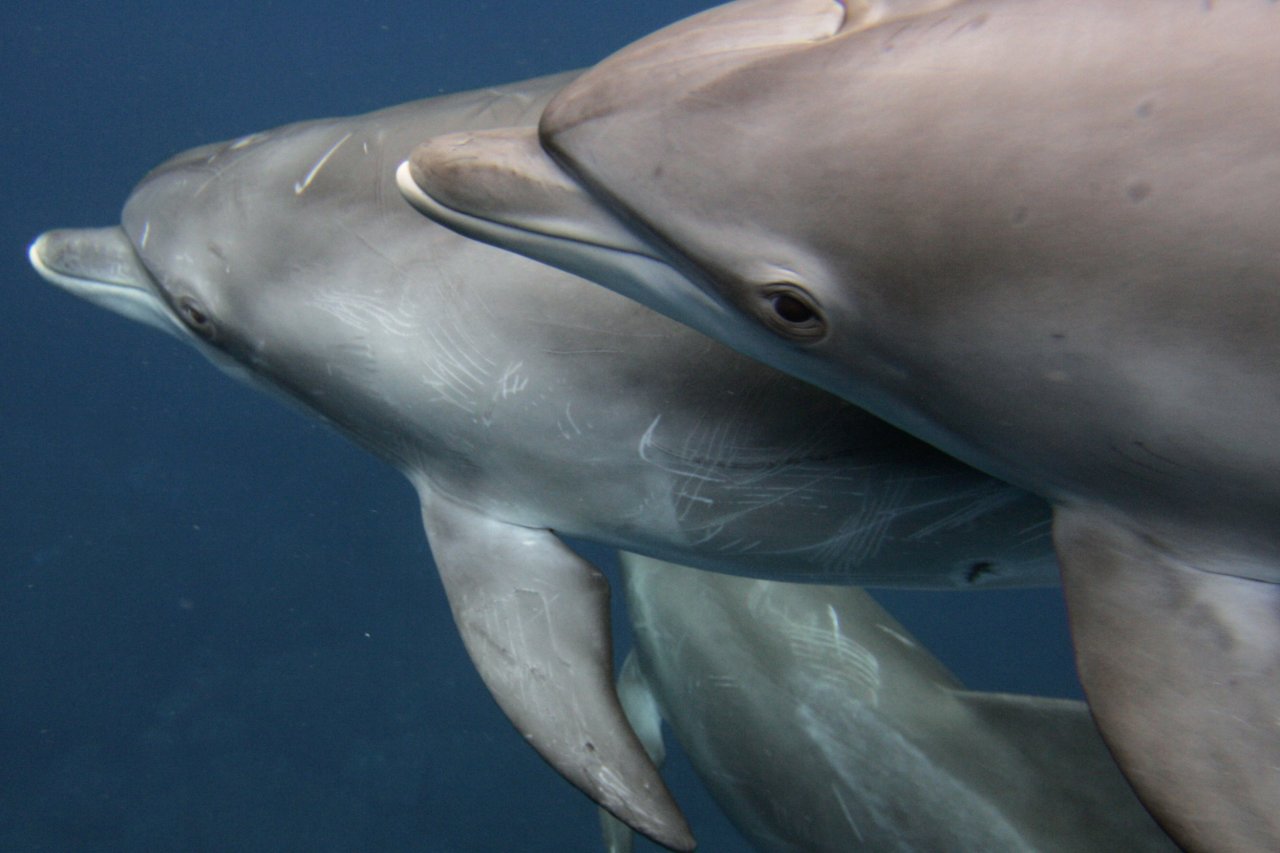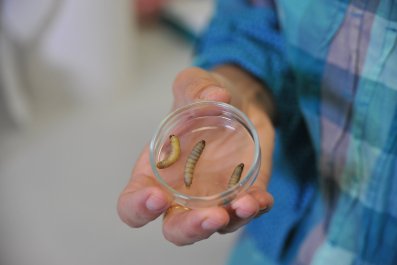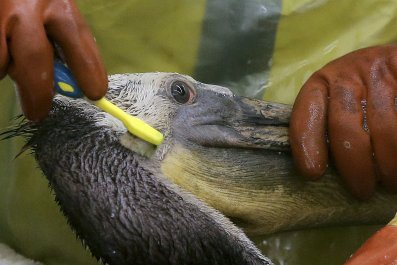Female genitalia are something of a mystery to scientists, male and female. "It's much easier to study something external than internal to the body," says Dara Orbach, who researches anatomy at Dalhousie University, in Halifax, Nova Scotia. For this reason, penises have long been the low-hanging fruits of sexual reproduction research. The role of vaginas in successful mating has been murky at best.
That imbalance has thwarted our understanding of many aspects of copulation. Until now—at least when it comes to dolphins.
Orbach studies reproduction among cetaceans, the group of water-dwelling mammals that comprises dolphins, porpoises and whales. Several years ago, she learned that female dolphins have unusual folds in their vaginas that serve an unknown purpose. Orbach suspected that this feature could be a way for the females to make fertilization more difficult, thereby controlling which male gets the job done.
Related: Watch a dolphin baby being born at Chicago's Shedd Aquarium
That thinking went against the scientific grain. Most research about animal copulation has females playing a more passive role. "There's a bias that sexual selection is driven by male processes," says Orbach.
She theorized that the vaginal folds might work like Cinderella's glass slipper: only a properly fitting penis lets the sperm reach the egg. Such restricted access would allow female dolphins to determine which male achieves fatherhood. Many animal species have this approach to mating, known as cryptic female choice, but no one had checked whether dolphins did. "There's been very little effort to understand if females have the ability to exercise mate choice," says Orbach.
That lackluster pursuit, she says, stems in large part from the inability to see vaginas in action. Understanding the mechanisms guiding reproduction requires knowing how male and female parts work together. For this reason, most studies of copulatory fit have focused on small arthropods, like damselflies and common fruit flies. Researchers studying insect mating can drop a copulating couple into liquid nitrogen, flash-freezing them for a close look at the jigsaw puzzle of their genitalia. As Orbach points out, that's not a realistic approach for large mammals.
But science finds a way. Orbach and her colleagues obtained reproductive tracts excised from dolphins, porpoises and seals that died naturally along the U.S. coast. "I get very stinky packages in the mail," she says. Her colleague Diane Kelly, a biologist at the University of Massachusetts, Amherst, inflated the penises to full erection, using a pressurized pump, to examine how they fit inside a female. "A flaccid penis wouldn't tell us much about how it functions during copulation," Orbach says.
Related: Female dragonflies fake death to avoid males harassing them for sex
Kelly had inflated the penises of other animals, including bats and alligators, but the cetacean organ posed a unique challenge. Like those of pigs and cows, these penises are fibroelastic. This connective tissue helps the dolphin keep the organ concealed when not in use so the swimming animal isn't slowed down by its low-hanging fruit. The fibroelastic tissue also makes penises less flexible and therefore harder to inflate.
The technique worked, allowing the researchers to simulate cetacean copulation in the laboratory. To do that, they inserted the inflated cetacean penises into thawed vaginas. Using computed tomography imaging, they then peered inside.
Combining postmortem samples with diagnostic imaging techniques was a first for the world of genitalia research. "It's a highly innovative approach," says Kathleen Colegrove, a veterinary pathologist at the University of Illinois at Urbana-Champaign. "Very creative."
The images were striking. Orbach knew that the sex organs of each cetacean species fit together differently. That diversity prevents, for example, bottlenose dolphins from mating with harbor porpoises. But now she could see how, exactly, the male and female parts fit together. The bottlenose dolphin vagina is like a plaster cast mold of the bottlenose dolphin penis. The tight fit hints at the ability of the females to control paternity, says Orbach, who presented the work at the recent Experimental Biology 2017 conference.
The slightest turn of the female's body could stop the penis from successfully navigating the vaginal folds and penetrating deep enough for fertilization. "Potentially, she has the ability to control the fertilization success," says Orbach, "without the male's knowledge."
Understanding the genitalia of marine mammals could improve our understanding of how diseases of the reproductive tract affect copulation, says Colegrove. In addition, she says, the work could inform assisted breeding efforts, such as those focused on cetaceans in captivity. Orbach notes that such detailed insights into genitalia interaction could lead to the creation of a synthetic vagina that helps endangered species reproduce by providing a realistic experience for male dolphins.
But Orbach is less concerned about the practical application than about simply expanding scientific knowledge. Rather than discussing the offbeat subject of her research, it's this aspect she finds most difficult. "My biggest challenge is to explain why it matters to understand the system for the sake of understanding it." In other words, people don't always understand the porpoise.
Orbach is now planning more studies using the same approach. That's because in science it's OK to have an inflated view of male anatomy.
















